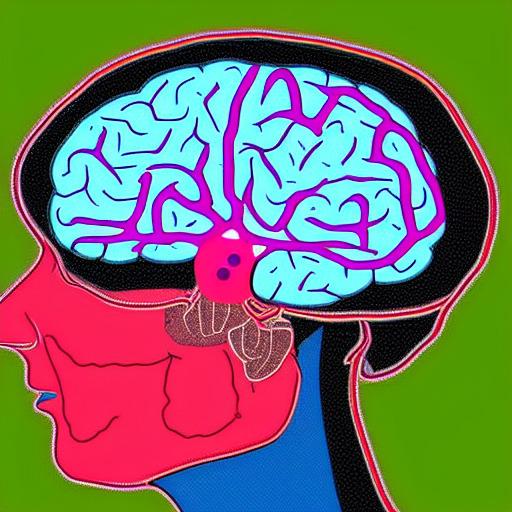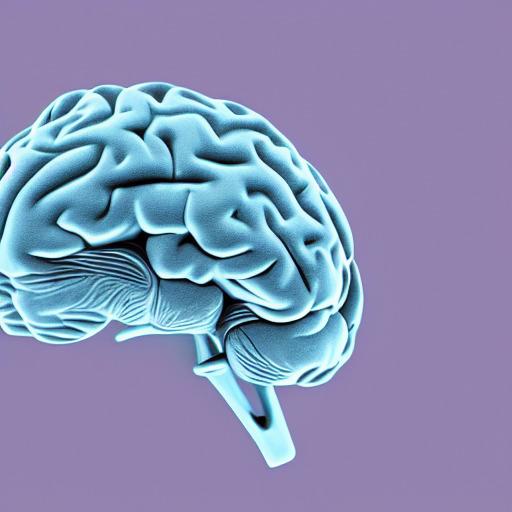
Your brain is suspended in cerebrospinal fluid. This same liquid fills large, open cavities called ventricles, found deep within the brain. The presence of this fluid keeps the brain cushioned and afloat.
What are brain ventricles?
The brain ventricles are four cavities within the brain that are filled with cerebrospinal fluid (CSF).
CSF is produced by the choroid plexus, which is located in the ventricles.
The main function of CSF is to protect the brain and spinal cord from shocks. It also provides a lubricating environment for these organs and absorbs nutrients and waste products from them.
CSF production follows a cycle where it’s constantly being made and reabsorbed. The ventricles play an important role in this process by allowing CSF to flow freely throughout the brain.
Additionally, they help to regulate the pressure of CSF within the brain. Without the ventricles, the brain would be unable to function properly.
Read also: Does ADHD Affect Memory
Why are ventricles so important?
The ventricles are important for several reasons.
They help to maintain the brain’s structure
The ventricles are an interconnected system of four cavities within the brain that are continuous with the central canal of the spinal cord.
The cavities are lined with ependymal cells and filled with cerebrospinal fluid (CSF).
CSF is produced by ependymal cells, which line the ventricles, and flows throughout the ventricular system and into the subarachnoid space.
They help to protect the brain by cushioning it from impact
The ventricles are a series of interconnected cavities within the brain that contain cerebrospinal fluid (CSF).
This clear, watery fluid cushions and protects the brain, providing it with a shock-absorbent environment.
CSF also circulates around the brain and spinal cord, delivering nutrients and removing waste products.
They help to regulate the pressure of the cerebrospinal fluid
The ventricles are cavities within the brain that contain cerebrospinal fluid (CSF). This clear, watery fluid cushions and protects the brain, providing it with a shock-absorbent environment.
CSF also circulates around the brain and spinal cord, delivering nutrients and removing waste products.
The ventricles play an important role in regulating the pressure of CSF within the brain. Any damage to the ventricles can lead to serious neurological problems.
They help to circulate cerebrospinal fluid
The ventricles are a series of interconnected cavities within the brain that contain cerebrospinal fluid (CSF).
This clear, watery fluid cushions and protects the brain, providing it with a shock-absorbent environment. CSF also circulates around the brain and spinal cord, delivering nutrients and removing waste products.
The ventricles play an important role in circulating CSF throughout the brain and spinal cord.
They help to absorb nutrients and remove waste products
The ventricles are a series of interconnected cavities within the brain that contain cerebrospinal fluid (CSF). This clear, watery fluid cushions and protects the brain, providing it with a shock-absorbent environment.
CSF also circulates around the brain and spinal cord, delivering nutrients and removing waste products.
Read also: How Does Bipolar Disorder Affect The Brain

What connects the 4 ventricles of the brain?
The four ventricles of the brain are interconnected by a series of channels known as the ventricular system. This system includes:
The foramen of Monro
The foramen of Monro is a small opening located in the center of the brain.
The foramen of Monro forms a connection between the third ventricle and the lateral ventricles, which are cavities within the brain that contain cerebrospinal fluid.
This opening allows cerebrospinal fluid to flow from the third ventricle into the lateral ventricles.
The interventricular foramina
The interventricular foramina are two small openings located on either side of the brain. The interventricular foramina form a connection between the lateral ventricles and the third ventricle.
This opening allows cerebrospinal fluid to flow from the lateral ventricles into the third ventricle.
The cerebral aqueduct
The cerebral aqueduct is a narrow passageway that runs through the center of the brain. The cerebral aqueduct forms a connection between the third ventricle and the fourth ventricle.
This opening allows cerebrospinal fluid to flow from the third ventricle into the fourth ventricle.
The foramen of Luschka
The foramen of Luschka is a small opening located on either side of the brain. The foramen of Luschka forms a connection between the fourth ventricle and the lateral ventricles.
This opening allows cerebrospinal fluid to flow from the fourth ventricle into the lateral ventricles.
The foramen of Magendie
The foramen of Magendie is a small opening located in the center of the brain. The foramen of Magendie forms a connection between the fourth ventricle and the central canal of the spinal cord.
This opening allows cerebrospinal fluid to flow from the fourth ventricle into the central canal of the spinal cord.
Read also: What Near-Death Experiences Reveal about the Brain
The bottom line
The ventricles are a series of four interconnected cavities in the brain. They are located in the cerebral hemispheres and are filled with cerebrospinal fluid (CSF).
The ventricles play an important role in CSF circulation and brain metabolism. CSF is produced by specialized cells in the ventricles, and it circulates through the ventricles before being reabsorbed into the bloodstream.
The ventricles also help to regulate brain volume and pressure. Abnormalities in ventricle size or function can lead to a variety of neurological disorders, including hydrocephalus (excessive accumulation of CSF), cerebral atrophy (shrinkage of brain tissue), and dementia.
Therefore, it is important to maintain healthy ventricle function for optimal brain health.



